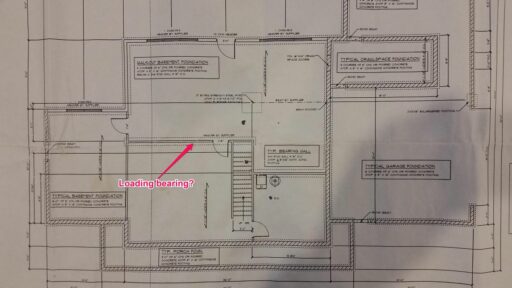In the dynamic world of construction, the accuracy and professionalism of a general contractor’s estimate can make a significant difference in securing projects. An estimate template serves as a crucial tool for contractors to detail project costs, timelines, and scope in a structured and clear manner. This article explores the essential elements of a general contractor estimate template, highlighting the benefits of using a standardized approach, and providing guidance on how to create a detailed and comprehensive construction estimate.
Key Takeaways
- A comprehensive general contractor estimate template should include a breakdown of materials and labor, project scope and specifications, timeline with milestones, and legal/administrative details.
- Using a standardized quote template enhances consistency, professionalism, and client trust, and streamlines project planning.
- Templates must be customizable to adapt to various project specifics, incorporate company branding, and be scalable for different project sizes.
- Building a detailed construction estimate involves itemizing expenses, accounting for unforeseen costs, and using legal size documents for clarity.
- Comprehensive quote templates can be sourced from industry-specific software, construction management websites, and are essential for thorough project budgeting and proposals.
Key Components of a General Contractor Estimate

Material and Labor Breakdown
A comprehensive material and labor breakdown is crucial for an accurate general contractor estimate. This section should detail the unit pricing, which involves separate costing for materials and the labor required for the build. The base rate for labor is typically expressed as a cost per hour for the entire crew, which is then multiplied by the total hours needed to complete a task.
The initial estimate on labor cost and material cost is subject to further adjustment, taking into account the general cost per square foot and the total square footage of the project.
Here’s an example of how to itemize these costs:
| Task | Labor Cost | Material Cost |
|---|---|---|
| Task A | $X/hr x Y hrs | $Z |
| Task B | $X/hr x Y hrs | $Z |
Remember to include all team member wages and add separate line items for materials. Repeat this process for each task required to complete the project. Additionally, account for indirect costs such as city permits and inspections, which are often overlooked but essential for a comprehensive estimate.
Project Scope and Specifications
Understanding the project scope and specifications is crucial for creating an accurate general contractor estimate. Begin by determining the scope of work, which may require a site visit to grasp the job requirements fully. This step ensures that all deliverables, timelines, and specific client needs are identified and accounted for in the estimate.
It’s essential to differentiate between working and calendar days, considering supplier lead times, permit approval periods, and other potential delays.
Carefully review the project specifications to uncover any unique requirements or challenges that could influence your bid. This includes a meticulous examination of the client’s expectations and any stipulations outlined in the tender document.
Here’s a breakdown of key elements to include in the scope and specifications section of your estimate:
- Project Deliverables: List all items and tasks to be completed.
- Timeline: Outline the estimated start and finish dates.
- Specific Requirements: Note any special conditions or client requests.
- Potential Challenges: Identify possible obstacles and how they might affect the project.
Timeline and Milestones
Incorporating a clear timeline and identifying key milestones are crucial for the transparency and accountability of a construction project. The timeline serves as a roadmap, guiding both the contractor and the client through each phase of the construction process. Milestones, on the other hand, are significant checkpoints that indicate progress and ensure that the project remains on track.
- Kick-off meeting and project commencement
- Completion of foundation and framing
- Installation of electrical, plumbing, and HVAC systems
- Interior and exterior finishing
- Final inspection and project handover
A well-defined timeline and set milestones not only facilitate better project management but also aid in setting realistic expectations for all parties involved. It is essential to align these elements with the project’s scope and specifications to avoid any discrepancies that could lead to delays or cost overruns.
Legal and Administrative Information
In the realm of construction, the legal and administrative segment of a general contractor estimate template is crucial for delineating responsibilities and setting clear expectations. This section should encompass all necessary legal documentation, including contracts, permits, and insurance requirements.
For instance, a table might be used to outline the types of required insurance coverage:
| Insurance Type | Coverage Limit | Notes |
|---|---|---|
| General Liability | $1,000,000 | Per occurrence |
| Workers’ Compensation | Statutory | As per state law |
| Professional Liability | $500,000 | Errors and omissions |
It’s essential to assign authority for each sub-project within the bid document to ensure clarity in management and legal responsibilities. This includes the power to sign relevant documents and commit to legal obligations.
Additionally, the estimate should detail the process for resolving disputes, such as mediation, arbitration, or litigation, and include any warranties or guarantees. Formal signatures are a must, as they make the contract legally binding and provide accountability for all parties involved.
Advantages of Using a General Contractor Quote Template

Consistency Across Proposals
Utilizing a general contractor estimate template is a strategic approach to maintain uniformity across all your proposals. This uniformity is not just about the look and feel of the documents but also about the structure and content. A consistent template ensures that every proposal you submit adheres to a standard that reflects your company’s professionalism and attention to detail.
- Establish budget, timeline, seek referrals, schedule consultations.
- Compare bids, define objectives, scrutinize details.
- Choose a contractor who aligns with your budget and communicates effectively.
By following a consistent format, you can streamline the comparison process for clients, making it easier for them to understand and evaluate your bid against others. It also simplifies your own internal processes, allowing for quicker bid preparation and submission.
A well-structured template can serve as a checklist to ensure that no critical elements are overlooked and that each proposal is comprehensive and complete. This level of thoroughness can significantly enhance your credibility with potential clients.
Enhanced Professionalism
Utilizing a general contractor quote template not only streamlines the estimation process but also depicts a high level of professionalism. A standardized template reflects your company’s commitment to quality and consistency, which can significantly influence a client’s perception. By presenting a well-structured and detailed proposal, you demonstrate your understanding of the project’s intricacies and your ability to manage it effectively.
A professional estimate template ensures that every proposal you submit is complete, accurate, and tailored to the client’s specific needs. This attention to detail is crucial in establishing trust and credibility.
Moreover, the use of a template allows for the consistent application of your company’s branding and messaging across all bids. This uniformity is essential when dealing with repeat clients or similar projects, as it reinforces your image as a reliable and professional entity in the construction industry.
Improved Client Understanding and Trust
Utilizing a general contractor quote template not only streamlines the estimation process but also plays a crucial role in fostering client understanding and trust. By presenting information in a clear and consistent format, clients can easily comprehend the various components of the project cost, which enhances transparency and confidence in the contractor’s services.
For instance, including standardized cost codes allows clients to monitor how project costs are allocated, which is a surefire approach to building trust. This openness and clarity are fundamental in establishing long-lasting partnerships, especially in the construction industry where trust is paramount.
A well-structured estimate template can help clients visualize the project’s timeline and financial trajectory, ensuring that expectations are aligned from the outset.
Moreover, by researching the client and tailoring the bid proposal to their specific needs, contractors demonstrate a commitment to client preferences, such as sustainability or energy efficiency. This personalized approach is instrumental in addressing potential challenges and reinforcing client confidence in the contractor’s ability to deliver.
Streamlined Project Planning
Utilizing a general contractor quote template can significantly streamline project planning. By having a standardized format, contractors can quickly outline the necessary steps and resources for a project, ensuring nothing is overlooked. This leads to a more efficient planning process and helps in maintaining a realistic budget.
Streamlined project planning involves establishing clear communication channels, creating detailed plans, and managing resources effectively.
Here’s a brief overview of how a template can aid in project planning:
- Get the Right Materials: Ensures accurate and consistent material lists.
- Establish Clear Communication: Facilitates information sharing among stakeholders.
- Create a Detailed Plan: Organizes tasks and milestones in a coherent manner.
- Maintain a Realistic Budget: Helps track expenses and anticipate costs.
By integrating professional services like project scheduling and resource allocation, contractors can assign resources and balance workload efficiently, keeping the project on track.
Customization and Flexibility in Contractor Templates

Adapting to Project Specifics
Every construction project is unique, with its own set of challenges and requirements. Carefully reviewing project specifications is crucial to understand the client’s needs and expectations, which allows for a tailored estimate that reflects the project’s intricacies. This includes identifying any specific requirements or challenges that may impact the bid, such as sustainability concerns or zoning restrictions.
Implementing the right software is key to adapting estimates to project specifics. Opt for platforms with built-in cost code integration and flexibility to ensure the software can meet the unique demands of the firm and adapt to the changing dynamics of individual projects. A robust structure from the beginning, periodic reviews and updates, and proper training for project teams on the framework are essential steps to ensure the estimate template remains relevant and effective.
By understanding potential challenges upfront, such as strict zoning or permitting requirements, a plan can be developed to address them in the bid proposal, ensuring a comprehensive and accurate estimate.
Incorporating Unique Company Branding
In the competitive landscape of general contracting, incorporating unique company branding into your estimate template can set you apart from the competition. A quote template, as defined by DealHub, is a customizable document used to deliver pricing estimates to potential customers. By tailoring this template with your company’s logo, color scheme, and corporate identity, you create a memorable impression that resonates with clients.
Your estimate template is not just a formality; it’s a strategic tool for brand reinforcement. Every element, from the header to the footer, should echo your brand’s ethos and aesthetic.
Consider the following elements for branding your estimate template:
- Logo placement and size
- Brand color scheme integration
- Typography that reflects your brand’s style
- Consistent use of language and tone that aligns with your branding
Remember, a well-branded estimate template does more than just look good—it builds trust and credibility with your clients, ensuring that your brand remains top-of-mind throughout the project lifecycle.
Scalability for Different Project Sizes
A general contractor estimate template must be versatile enough to accommodate projects of varying sizes. Scalability is a critical feature that allows contractors to adjust the level of detail and complexity based on the project’s requirements. For smaller projects, a simplified template may suffice, focusing on the essentials such as material costs and labor hours. In contrast, larger projects demand a more comprehensive approach, including detailed breakdowns of costs, timelines, and resources.
The following table illustrates how a template might be scaled:
| Project Size | Template Complexity | Features |
|---|---|---|
| Small | Low | Basic cost and labor estimates |
| Medium | Moderate | Expanded cost details, timeline milestones |
| Large | High | Full breakdown of all expenses, resource scheduling, legal documentation |
Scalability ensures that the template remains a valuable tool regardless of the project’s scope, promoting efficiency and accuracy in the estimation process.
By selecting a template that offers scalability, contractors can ensure that their estimates are always tailored to the specific needs of the project, whether it’s a home renovation or a large-scale construction. This adaptability not only saves time but also enhances the reliability of the estimates provided to clients.
Versatile Application for Various Construction Projects
General contractor estimate templates are designed to be adaptable, catering to a wide array of construction projects. Whether it’s a residential remodel or a large-scale commercial build, the right template can serve as a foundational tool for accurate and efficient estimates. The versatility of these templates lies in their ability to be customized to the specific needs of each project, ensuring that all relevant details are accounted for.
The key to successful project management is a clear understanding of the project’s scope and requirements. A versatile template helps maintain this clarity throughout the construction process.
For instance, a template might include sections for various types of work such as electrical, plumbing, and structural, which can be expanded or condensed based on the project size and complexity. This flexibility is crucial for general contractors who manage a diverse portfolio of projects, as it allows them to maintain consistency while adapting to each unique situation.
Building a Detailed Construction Estimate

Itemizing Expenses
Itemizing expenses is a critical step in building a detailed construction estimate. Breaking down costs into specific categories not only provides clarity but also helps in managing the budget effectively. Categories may include materials, labor, equipment, permits, and overheads.
- Research and list the prices of each item to ensure realistic cost projections.
- Determine essential costs versus those that can be reduced or eliminated.
- Create a budget for each expense category to monitor spending.
By categorizing and itemizing expenses, contractors can track and control costs more efficiently, leading to better financial management throughout the project.
Utilizing technology such as budgeting software can streamline this process, allowing for a more dynamic and responsive approach to cost management. It’s important to establish a timeline for when expenses will be incurred, aligning them with project milestones and expected cash flow.
Accounting for Unforeseen Costs
In the realm of construction, unexpected expenses are a common occurrence, making it crucial for general contractors to account for these potential costs in their estimates. A well-prepared estimate includes a contingency fund, which serves as a financial safety net. This fund is typically a percentage of the total estimated costs, with industry standards suggesting an allocation of 10-20% for unforeseen expenses.
To manage these costs effectively, contractors should:
- Build a contingency fund at the project’s outset.
- Make conservative assumptions about potential costs.
- Remain flexible to adjust the cost plan as the project evolves.
By incorporating a structured approach to accounting for unforeseen costs, contractors can safeguard their projects against financial overruns and maintain project viability.
Regular monitoring of expenses through cost codes is also essential, as it allows for real-time tracking and immediate action if the budget begins to deviate. This proactive stance enables contractors to address discrepancies before they escalate into larger financial issues.
Legal Size Documents and Item Description Lines
When preparing a general contractor estimate, the use of legal size documents is crucial for clarity and thoroughness. These documents typically feature up to 30 item description lines, providing ample space for detailed cost breakdowns. This format not only accommodates client information and additional expenses but also ensures that all aspects of the job are accounted for.
The customization of these forms is key to aligning with your company’s unique processes. During the proofing stage, it’s essential to request any necessary modifications to the template. If the project scope requires, additional pages can be seamlessly integrated, with page numbers at the top right to maintain organization across multiple pages.
The ability to customize and expand upon estimate sheets reflects the dynamic nature of construction projects, where each job may present its own set of challenges and requirements.
Here’s an example of how item description lines might be structured in a legal size document:
| Item No. | Description | Quantity | Unit Cost | Total Cost |
|---|---|---|---|---|
| 1 | Concrete | 10 yd3 | $120 | $1,200 |
| 2 | Lumber | 500 ft | $2.50 | $1,250 |
Remember to assess contractor’s communication and management skills, verify licenses and past work, understand contracts thoroughly, and budget wisely for construction projects. Seeking legal advice if needed can also safeguard against potential issues.
The Role of Construction Estimate Templates in Budgeting
Construction estimate templates serve as a pivotal tool in the budgeting process, ensuring that all financial aspects of a project are meticulously accounted for. These templates facilitate a systematic approach to budget creation, which is crucial for maintaining financial control from the outset. By breaking down the project into detailed expense categories, contractors can generate a comprehensive budget that aligns with the project’s scope and anticipated costs.
The construction estimate template is not just a document; it’s a roadmap that guides the financial planning of a project, ensuring that every dollar is allocated with purpose and precision.
For instance, a typical template might include sections for materials, labor, equipment, and indirect costs, each with subcategories for finer detail. This level of granularity helps in identifying potential savings and areas where the budget may need to be adjusted. The use of construction estimating software further streamlines this process, allowing for real-time updates and tracking against the actual expenses as the project progresses.
Finding and Utilizing Comprehensive Quote Templates

Sources for Building Contractor Quote Templates
Finding the right building contractor quote template is crucial for ensuring accurate and professional project estimates. Comprehensive templates can be found on various online platforms, which cater specifically to construction professionals. These platforms range from industry-specific software solutions to construction management websites, and even template repositories offering customizable options.
To select the most suitable template for your needs, consider the following sources:
- Industry-specific software solutions
- Construction management websites
- Online template repositories
- Professional construction associations
It’s important to be proactive in choosing a template that not only fits the project but also enhances your company’s professionalism. A good template should allow for clear communication of costs, scope, and timelines to clients, which is essential for the success of any construction project.
Remember, the goal is to find a template that provides a solid foundation for successful project execution, while also being adaptable to the unique needs of each construction project.
Benefits of Industry-Specific Software Solutions
Industry-specific software solutions offer a myriad of benefits tailored to the construction sector. These solutions are designed to enhance the efficiency and accuracy of estimates, ensuring that general contractors can deliver under budget while managing crews effectively. The software often includes features such as built-in cost code integration and the flexibility to adapt to the unique demands of each firm and project.
Software solutions by industry also allow for better reporting capabilities. This enables contractors to track progress comprehensively and make informed decisions quickly. For instance, construction software might include modules for scheduling, resource management, and budget tracking, which are essential for maintaining control over a project’s financial health.
The value of a detailed, professional estimate cannot be overstated in the competitive construction industry.
Selecting the right software is crucial. It should align with the company’s workflow and be scalable to accommodate various project sizes. Here’s a list of considerations when choosing software:
- Customized security options
- Priority support for enterprise needs
- Industry-specific features such as schedule creation and crew management
- Streamlined processes for IT and professional services
- Scalability and adaptability for different use cases
Customizing Templates from Construction Management Websites
Construction management websites offer a plethora of customizable templates that can streamline the process of creating contractor estimates. By leveraging these resources, teams can adapt templates to the unique demands of each project, ensuring that all relevant details are captured.
It’s essential to choose templates that align with the project’s complexity and scope, as well as the company’s branding and operational standards.
Construction bidding software often comes with a suite of tools that enhance collaboration and efficiency. Multiple team members can work on the same document, which is particularly useful when dealing with complex bids or when input from various departments is required. Here’s a simple list of best practices to consider when customizing your template:
- Use simple language to ensure clarity and prevent misunderstandings.
- Make your template accessible to all relevant teams within your firm.
- Add only relevant sections to avoid unnecessary filler.
- Utilize construction bidding software for a more streamlined process.
Remember, a well-crafted template is more than just a document; it’s a tool that aids in navigating contractor estimates and bids, ensuring transparency and accuracy throughout the bidding process.
Ensuring Comprehensive Coverage of All Project Aspects
To ensure comprehensive coverage of all project aspects, a general contractor must meticulously detail every facet of the construction process. This includes a thorough breakdown of costs, from materials to labor, and a clear outline of the project’s scope. A well-structured estimate template can serve as a checklist to guarantee nothing is overlooked.
A comprehensive estimate safeguards against unforeseen expenses and provides a clear roadmap for project execution.
It is essential to assess the project scope and needs before selecting a contractor. This ensures satisfaction and successful completion. The following list represents key areas that must be included in a contractor’s estimate to achieve comprehensive coverage:
- Detailed cost breakdown for materials, labor, and equipment
- Clear definitions of project scope and deliverables
- Timeline with milestones and completion dates
- Legal requirements, including permits and inspections
- Contingency plans for unexpected challenges
By addressing these areas, contractors can present a well-rounded proposal that instills confidence in potential clients.
Conclusion
In conclusion, a well-structured general contractor estimate template is an indispensable tool for ensuring accuracy, clarity, and professionalism in construction project proposals. By incorporating key elements such as detailed cost breakdowns, timelines, and customizable features, contractors can provide comprehensive and understandable quotes that cater to the specific needs of each project. The use of such templates not only streamlines the estimation process but also enhances communication with clients, ultimately contributing to the successful acquisition and execution of construction projects. As we’ve explored throughout this article, whether you’re starting from scratch or looking to refine your existing templates, the insights provided here will help you build a solid foundation for your project estimates.
Frequently Asked Questions
What are the key elements to include in a general contractor estimate template?
Essential components of a general contractor estimate template include a material and labor breakdown, project scope and specifications, timeline and milestones, and legal and administrative information.
How does using a general contractor quote template improve project proposals?
A general contractor quote template ensures consistency, professionalism, and clarity in project proposals, making them more understandable and appealing to clients, which can increase the chances of winning the project.
Are free contractor quote templates customizable for specific projects?
Yes, many free contractor quote templates offer customization features that allow them to be tailored to the specific requirements of each project.
Where can I find a comprehensive building contractor quote template?
Comprehensive building contractor quote templates can be found on construction management websites, industry-specific software solutions, and online template repositories that offer customizable options.
What is the role of construction estimate templates in budgeting?
Construction estimate templates play a critical role in budgeting by providing a structured way to list and organize expenses, which is essential for creating an accurate and detailed construction project budget.
Can a contractor estimate template accommodate large projects with multiple pages?
Yes, contractor estimate templates can be designed to accommodate large projects by including features such as multiple pages with item description lines and space for client information and additional expenses.





